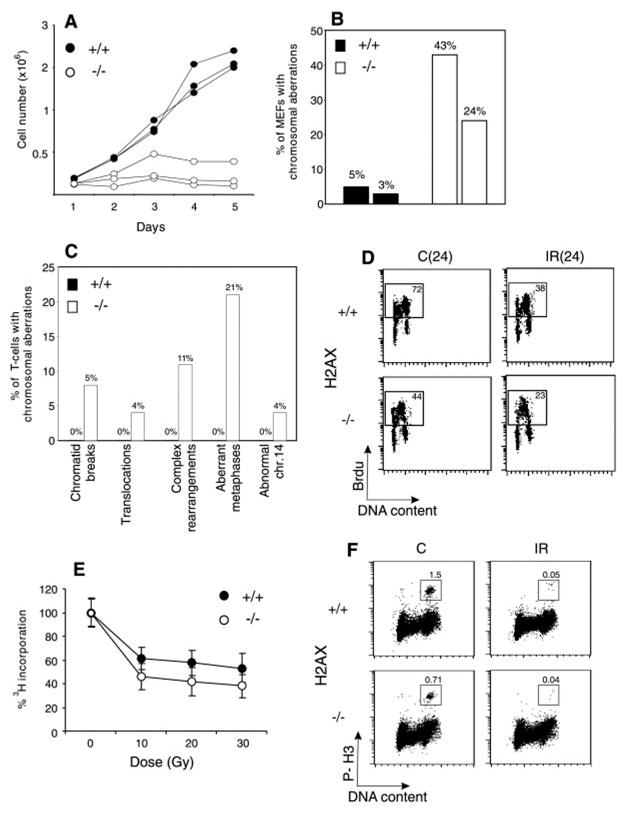Fig. 1. H2AX deficiency results in growth retardation and genomic instability, but does not abrogate irradiation-induced cell-cycle checkpoints. (A) Growth kinetics of three independent H2AX−/− (○) and wild-type (●) MEFs at passage 1.

(B) Percentage of cells with chromosome aberrations from two different H2AX wild-type (filled bars) and knockout (open bars) MEFs. (C). Aberrations found in wild-type (+/+) (left bars) and knockout (−/−) (right bars) activated T cells. (D) Irradiation-induced G1 to S checkpoint. Exponentially growing passage 1 MEFs were untreated (C) or irradiated (IR) with 10 Gy of γ-irradiation, then grown for 24 hours in the presence of BrdU. The percentage of cycling (BrdU+) cells is indicated. (E) Irradiation-induced S-phase checkpoint. The [3H]thymidine incorporation in unirradiated cultures was set to 100%. (F) Irradiation-induced G2-M checkpoint. Cells were either untreated or irradiated with 10 Gy, then incubated for 1 hour at 37°, and cells in mitosis were identified by costaining with PI and antibody to phospho-histone H3 (P-H3). The percentage of cells in mitosis is indicated.
